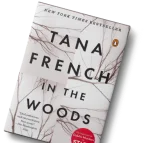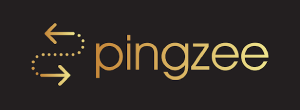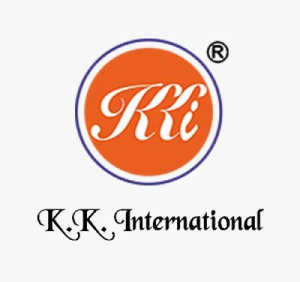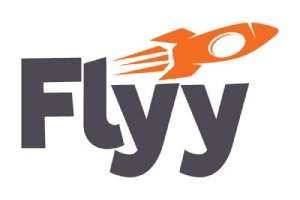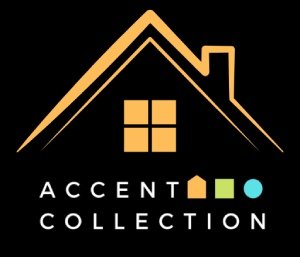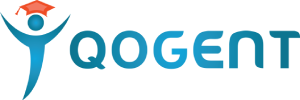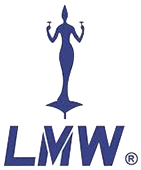
Publishing a book can be thrilling, but one of the first questions every author asks is: How much does it cost to publish a book? Whether you’re writing a novel, memoir, or business guide, costs can vary widely depending on your publishing route and the professional services you choose.
For self-publishing, you can spend anywhere from $0–$500 on a DIY approach, $1,000–$5,000 for a professional-quality book with editing, cover design, and formatting, or $10,000+ for premium services including marketing, branding, and audiobook production. Traditional publishing often requires no upfront payment, but you trade creative control and royalties, and may still invest in marketing and author branding.
With platforms like Amazon KDP, IngramSpark, and expert support from Estorytellers, authors can publish professionally while controlling costs and maximizing their impact. This guide covers step-by-step budgeting, essential services, and real-world cost ranges so you can plan your publishing journey confidently and avoid surprises.
Wondering What Publishing Will Cost?
We break down the real expenses — writing, editing, cover design, printing, KDP, and more.
1. The Two Main Paths to Publishing a Book
Before you can estimate how much it will cost to publish your book, you need to decide how you’ll publish it. Broadly speaking, there are two main routes: self-publishing and traditional publishing. Each has a dramatically different financial model.
Self-Publishing: You Pay, You Control
In the self-publishing model, you are the publisher. That means you cover the upfront costs of editing, design, formatting, distribution, and marketing. But you also get full creative control and a higher share of royalties—usually 60–70% on platforms like Amazon KDP.
Self-publishing costs can vary widely depending on how much work you outsource vs. do yourself. It’s possible to publish a book on a shoestring budget, but professional help (like cover design or editing) often separates forgettable books from successful ones.
Traditional Publishing: The Publisher Pays, But You Wait
Traditional publishing typically costs you nothing upfront. The publisher pays for editing, design, printing, and distribution. In exchange, they take most of the profits and control the timeline, cover, pricing, and marketing strategy.
But here’s the catch: landing a traditional publishing deal is highly competitive. Most authors need a literary agent, and even then, it can take years to secure a deal. Plus, you’ll still invest time and money into marketing your book, even with a publisher behind you.
Hybrid Models: The Gray Area
Some authors opt for hybrid publishing services that offer professional help (often for a fee) while giving you a larger royalty share than traditional deals. Think of it as hiring a publishing partner rather than going fully solo or corporate.
Want to Publish Affordably?
Our packages are flexible — from budget-friendly self-publishing to premium ghostwriting services.
2. Core Costs of Self-Publishing a Book
Self-publishing gives you creative control and higher royalties, but it also means you’re footing the bill for everything. Understanding the essential cost categories can help you plan a smart, strategic publishing budget.
Editing
Professional editing is the most important investment in your book. Most authors need:
- Developmental editing ($500–$3,000): Focuses on structure, pacing, and clarity.
- Copyediting ($300–$1,200): Improves grammar, style, and consistency.
- Proofreading ($200–$800): Final polish before publishing.
Skimping on editing can damage your credibility and reader reviews.
Cover Design
You can use a free Canva template, but professionally designed covers ($200–$1,000) are critical for attracting readers and conveying quality at a glance.
Interior Formatting
Clean, readable formatting ($100–$500) ensures your ebook and print editions look professional across devices and print-on-demand services.
ISBN and Barcode
An ISBN identifies your book in global databases. You’ll need one per format (ebook, paperback, audiobook). Expect to pay $125 for one or get a block of 10 for $295 in the U.S. Some platforms (like Amazon) offer free ISBNs, but they limit distribution options.
Printing and Distribution
Print-on-demand services like Amazon KDP and IngramSpark keep upfront costs low, but you’ll need to factor in:
- Print proof copies ($5–$25 each)
- Distribution fees (percentage of royalties)
Marketing and Promotion
A well-written book still needs an audience. Self-publishing authors often spend $200–$5,000+ on:
- Social media promotion
- Email marketing tools
- Book launch campaigns
- Paid ads (Amazon, Facebook, Google)
Optional Extras
- Audiobook production ($500–$3,000)
- Author website ($100–$1,000)
- Book trailers or promo videos ($300–$2,000)
Need a Custom Quote?
Talk to our experts for a breakdown of costs based on your book’s goals, length, genre, and format.
3. Traditional Publishing: What Do You Pay For?
At first glance, traditional publishing seems “free”—the publisher covers all the costs. But there’s more nuance (and hidden expenses) than most first-time authors realize.
What’s Covered by the Publisher
When you land a traditional publishing deal, the publishing house typically pays for:
- Editing (all levels)
- Cover design and interior formatting
- Printing and distribution
- Basic marketing and publicity
You’ll also receive an advance (an upfront payment against future royalties), though these can range wildly, from a few hundred dollars to six figures for celebrity authors.
Royalties: The Trade-Off
Traditional publishers keep the majority of book revenue. Most authors receive:
- 5–15% of the print book’s list price
- 25% of the net for ebooks
Royalties are often paid twice a year, and you won’t earn anything beyond your advance until your book “earns out” what they paid you.
Agent Commissions
Most traditional publishing contracts are negotiated by literary agents, who typically take a 15% commission on all income from the deal (advance + royalties).
Out-of-Pocket Costs You Still Pay
Even with a publisher, authors often cover:
- Marketing beyond the basics (e.g., social ads, podcast interviews, giveaways)
- Travel for book events and conferences
- Platform-building costs (website, newsletter tools)
- Professional help like ghostwriting or branding, if not handled in-house
So while you won’t pay upfront for editing or design, you’ll likely still invest in your book’s long-term success.
Tired of Hidden Charges?
We offer clear, upfront pricing with full control over your book’s rights, royalties, and quality.
4. Real-World Examples of Publishing Budgets
Every author’s publishing journey is different, but it helps to see real-world examples of how much people actually spend. Whether you’re bootstrapping or going all-in, there’s a publishing budget that fits your goals.
Low-Budget Publishing: $0–$500
This is the DIY route. It’s possible—especially if you:
- Write, edit, and format your own book
- Use free design tools or premade templates
- Publish exclusively on Amazon using a free ISBN
Risk: The trade-off is often lower production quality and poor sales due to lack of professional polish.
Mid-Range Budget: $1,000–$5,000
This is the sweet spot for many indie authors. It usually covers:
- Professional editing (at least copyediting or proofreading)
- Custom cover design
- Ebook and print formatting
- Basic book marketing (like email tools or a simple launch campaign)
Ideal for: Authors who want a quality book without breaking the bank.
High-End Publishing: $10,000+
This level is for authors treating their book like a startup product or personal brand investment. It often includes:
- Multiple rounds of editing
- Custom design and illustration
- Audiobook production
- Strategic marketing and PR
- Author branding and website
Ideal for: Entrepreneurs, thought leaders, or fiction authors aiming for bestseller status.
Want to Know Bestseller Costs?
From basic launch to bestseller strategy — we give you the right plan for the impact you want.
5. How to Budget Based on Your Publishing Goals
There’s no one-size-fits-all publishing budget. The right spending plan depends on your goals, your audience, and how much time and effort you’re willing to invest yourself.
Start With Your Goals
Ask yourself:
- Do I want to make money or build authority?
- Is this book for clients, fans, or personal legacy?
- Am I aiming for bestseller lists or simply to finish?
Your answers will shape where to invest most—whether in editing, design, or marketing.
Spend Where It Matters Most
Regardless of budget, you should prioritize:
- Editing – A must-have. Poor editing ruins credibility.
- Cover design – This is your book’s first impression.
- Formatting – Sloppy formatting can hurt readability and reviews.
These are the minimum investments that separate amateur books from professional ones.
Where You Can Save
If you’re on a tight budget:
- Use free tools like Vellum (Mac) or Reedsy for formatting
- Choose pre-made covers with customization options
- Market using organic channels: social media, blogs, newsletters
But remember: time is a cost, too. DIY saves money, but takes effort.
Use Tools and Teams Wisely
Publishing platforms like Amazon KDP and IngramSpark keep production costs low. Pair them with:
- Author communities for advice and feedback
- Freelancers or full-service teams for design, editing, or marketing
- Hybrid publishers if you want a guided process
A small investment in expert help often results in higher sales, more reviews, and less stress.
Limited Budget?
We provide editing, formatting, cover design, and publishing support even if you’re on a tight budget.
Conclusion: Plan Your Publishing Budget With Confidence
Publishing a book in 2025 doesn’t have to be confusing or prohibitively expensive. The key is knowing your options and aligning your spending with your goals.
- Self-publishing vs. traditional publishing: Self-publishing gives full creative control and higher royalties but requires upfront investment. Traditional publishing covers most costs but limits control and profit share. Hybrid options offer a balance.
- Essential services: Professional editing, cover design, formatting, and marketing remain the most impactful areas to invest in, ensuring your book meets industry standards and attracts readers.
- Budget ranges: From DIY options under $500 to full-service packages exceeding $10,000, there’s a publishing strategy for every author and goal. Strategic investment in professional help often leads to higher sales, more reviews, and lasting credibility.
- Smart planning: By defining your goals, prioritizing key services, and leveraging platforms like Amazon or Estorytellers, you can publish efficiently while maximizing impact.
Whether it’s your debut book or the next installment in your author journey, understanding publishing costs allows you to make informed decisions, protect your investment, and launch a book that truly resonates with readers. With the right team and strategy, publishing your dream book in 2025 is not just possible—it’s within reach.








